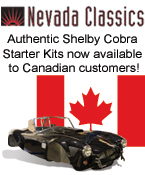
07-10-2009, 08:09 AM
|
|
CC Member

|
|
|
Join Date: Jan 2007
Cobra Make, Engine:
Posts: 61
|
|

 Not Ranked
Not Ranked
 Expert in Brake Hydraulics Needed
Expert in Brake Hydraulics Needed
Two years ago I replaced the stock Mustang !! front brakes on my LAX (now B&B) with a kit that used 11" Granada Rotors and 1980's Camaro calipers and have had a mushy pedal eversince. I can do 3 or 4 pumps and the brake pedal will give a little more resisance higher up, and this is usually the big clue that there's an air bubble in the system. After pumping and vacuum sucking about 5 or 6 quarts of Dot 3 through the system, I have no improvement. So, I made some devices to clamp down on the rubber brake hoses to seal off the individual calipers. (I can describe these in detail later if anyone's interested.) To make a long story short, with all 4 calipers sealed off, I have a very hard, high brake pedal. Pushing very hard for 10-15 seconds does not result in any leaks. Conclusion, the Master Cylinder and brake lines up to the hoses are good and tight. Sequentially releasing the clamps on individual calipers and pushing on the brake pedal allows the brake pedal to depress further and become more mushier each time. With all calipers functional, the brake pedal "catches" about 3" from the floor and can be depressed almost to the floor.
So, does anyone think my Master Cylinder is too small? It's a new one, has a 1.0" piston and it's for a 78 Mustang II. The rear calipers have the stock 2.125" pistons, while the front calipers went from 2.625" pistons to 2.938" pistons. Does any brake expert think this increase in caliper piston diameter exceeded the capacity of thge Master Cylinder?

|


